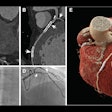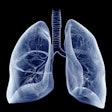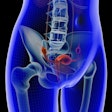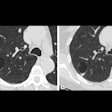Dear AuntMinnie Member,
Just how safe is image-guided liver biopsy? A new study by radiologists from the Mayo Clinic in Rochester, MN, found that while it remains a relatively safe procedure, it's not completely risk-free.
The Mayo team reviewed the records of more than 6,000 liver biopsies guided by CT and ultrasound to determine rates of patient morbidity and mortality. They wanted to determine if complication rates were higher in certain types of patients -- a finding that could help inform interventional radiologists about whether they were facing higher risks in certain individuals.
They found that, indeed, some patients did have higher rates of complications, such as hematoma, and they also found one patient death in the study group. Find out which factors were indicators of increased risk by clicking here, or visit our Ultrasound Community at ultrasound.auntminnie.com.
Expanding CT lung screening
Are the criteria we're using to determine who is eligible for CT lung cancer screening too restrictive? That's the implication of a new article we're highlighting in our CT Community.
A group from Massachusetts performed screening studies on approximately 1,700 individuals, including nearly 500 who didn't qualify for screening under the landmark National Lung Screening Trial (NLST) for various reasons, such as not smoking long enough.
They found that malignancy rates and other measures of screening's effectiveness were almost the same between the group that didn't conform to NLST criteria and the group that did. Learn more by clicking here.
While you're in the community, also check out this article on a recent study in which radiologists appeared to prefer that their own screening for colon cancer be performed with optical colonoscopy rather than CT colonography. But there might be more to the study than meets the eye.
PET for Alzheimer's
Finally, make sure to visit our Molecular Imaging Community for this article on a study in which German researchers compared an automated technique for interpreting PET studies of Alzheimer's disease with conventional visual analysis.



















